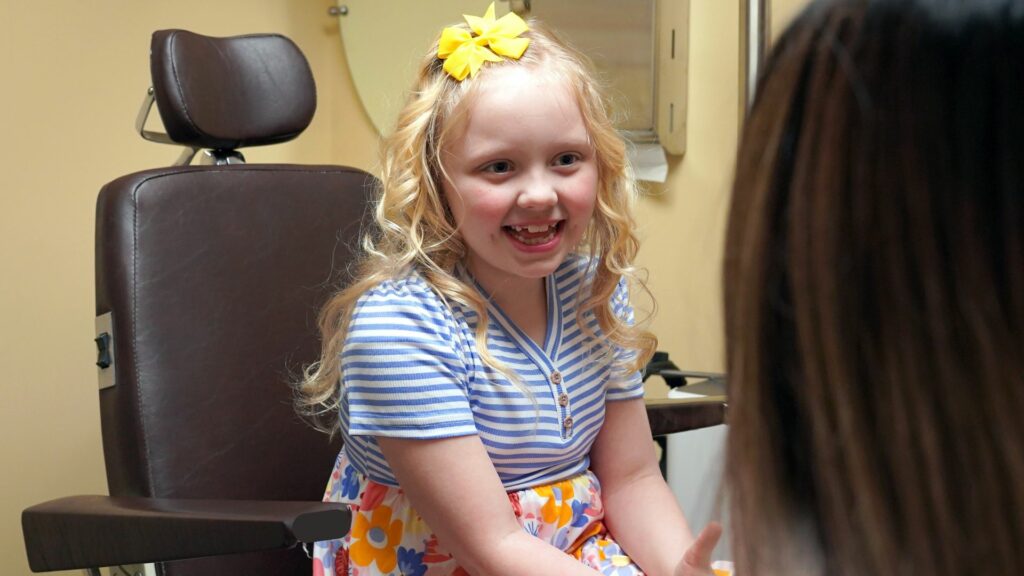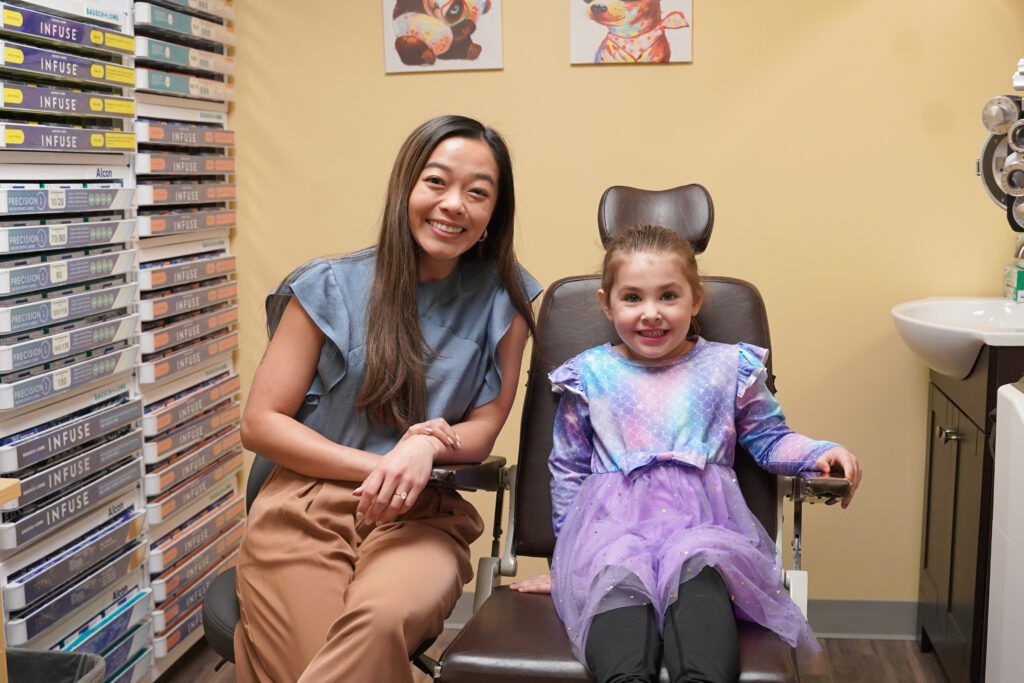Pediatric Eye Care

Pediatric Eye Exam: Why It’s Important
A pediatric eye exam is an essential part of your child’s overall health care. A young child does not know how they should see and is unable to tell you about their vision. Early detection of vision problems can prevent complications and ensure that your child has the best possible visual development. Regular eye exams help detect potential issues before they affect learning or daily activities.
When Should My Child Have Their First Eye Exam?
- Newborn to 1 year: It’s important for babies to be examined for obvious eye conditions like crossed eyes, cataracts, or vision problems.
- 3 to 4 Years: A comprehensive eye exam is recommended to detect conditions like amblyopia (lazy eye) or refractive errors.
- 5+ Years: Annual exams help ensure proper vision and detect any eye health issues before they affect school performance.
Signs Your Child May Have Vision Problems
- Squinting or tilting the head to see better
- Frequent rubbing of the eyes
- Difficulty reading or sitting too close to the TV or book
- Complaints of headaches or eye strain
- Covering one eye to see better
- Avoiding activities that require seeing, like reading or sports
- Red, watery, or crusted eyes
Common Vision Problems in Children
- Nearsightedness (Myopia): Difficulty seeing objects far away.
- Farsightedness (Hyperopia): Difficulty seeing objects up close.
- Astigmatism: Blurred vision caused by an irregularly shaped cornea.
- Amblyopia (Lazy Eye): One eye has weaker vision than the other and can lead to vision loss if untreated.
- Strabismus (Crossed Eyes): Misalignment of the eyes.
How to Help Your Child’s Eye Health
- Ensure they take regular breaks from screens (20-20-20 rule: every 20 minutes, look at something 20 feet away for 20 seconds).
- Encourage outdoor activities to promote healthy eye development.
- Maintain a healthy diet with foods rich in vitamins A, C, and E, as well as omega-3 fatty acids.
- Be aware of any family history of eye conditions (like glaucoma or lazy eye) to discuss with the doctor.
- Ensure they have adequate UV ad blue light protection
What Happens If Vision Problems Are Not Treated?
Untreated vision issues can affect your child’s learning, development, and overall quality of life. Conditions like lazy eye or refractive errors can worsen over time if not addressed, leading to long-term visual impairment. Early intervention provides the best chance for correcting many eye conditions.
Schedule an Eye Exam Today!
Ensure your child’s eyes are healthy and developing properly. Early detection is key to preventing potential vision problems and ensuring a bright future!


